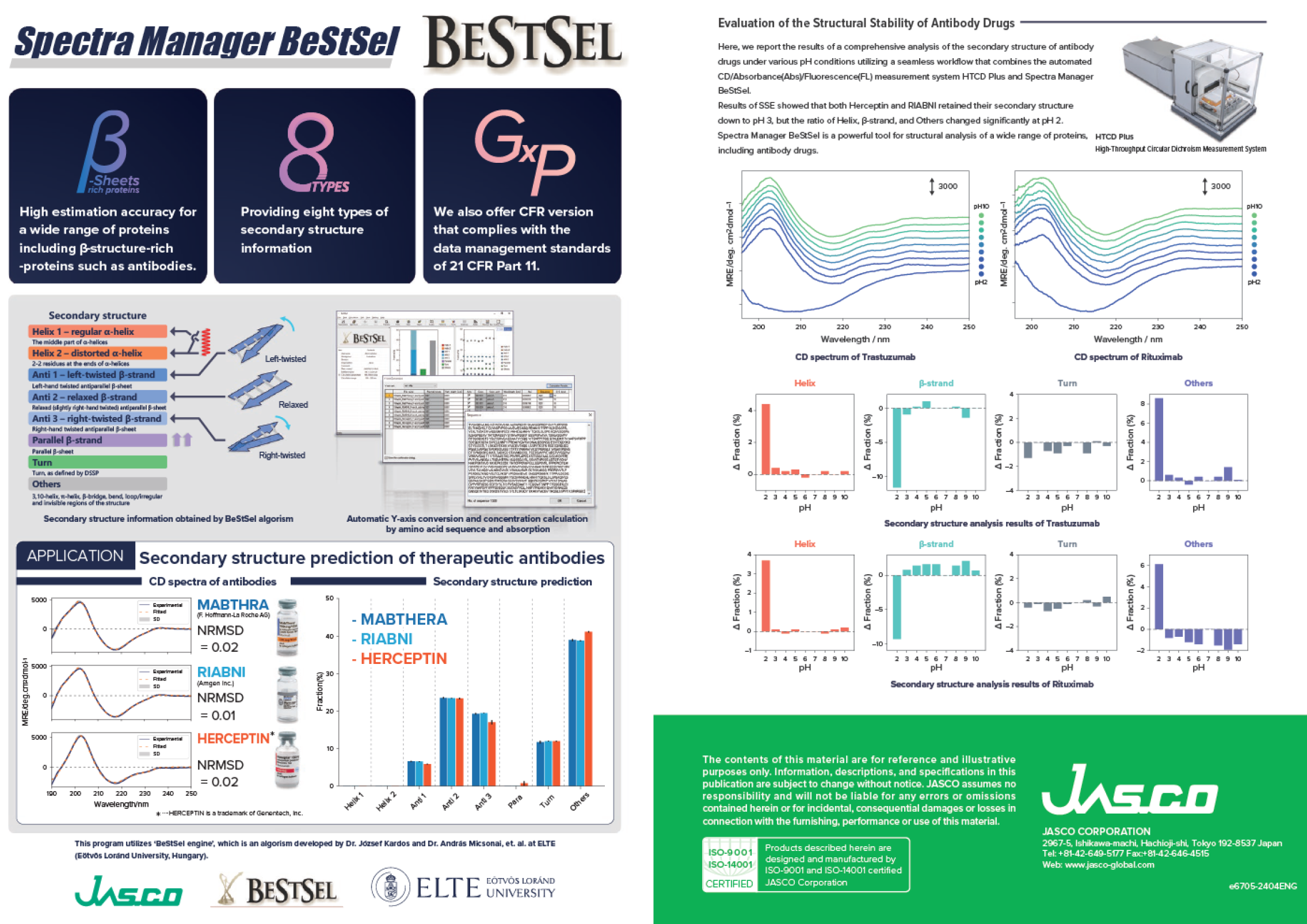We are pleased to announce the release of the latest addition to Spectra Manager™ Suite of Molecular Spectroscopy Software – BeStSel. This new application software was developed in collaboration with Dr. József Kardos and Dr. András Micsonai of ELTE.
Circular Dichroism (CD) spectroscopy is widely used for the experimental structural characterization of biomolecules. For therapeutic proteins and antibodies, the study of the higher order structure is an integral part of their characterization. Eötvös Loránd University (ELTE) researchers József Kardos and András Micsonai at the Department of Biochemistry has developed the BeStSel method to estimate protein secondary structure from CD spectra with performance and accuracy superior to many legacy algorithms. Publications using this method have been cited by more than a thousand scientific papers1. In addition to greater accuracy, BeStSel provides more detailed structural information by being able to distinguish up to eight individual secondary structural motifs.
ELTE hosts the popular BeStSel website allowing users to analyze their CD data online, however, many biopharma companies are prevented from exchanging their proprietary data with the site; the new Spectra Manager BeStSel add-in allows spectral interpretation in a protected offline PC.
JASCO Corporation (Tokyo, Japan) is pleased to announce a long-term collaboration with ELTE to integrate the BeStSel application in Spectra Manager™ (and 21 CFR part 11 compliant version). JASCO’s circular dichroism spectrometers are able to analyze Higher Order Structure (HOS) using BeStSel for secondary structure and qHOS for secondary and tertiary structure, with the highest accuracy and specificity while also meeting industry standards and regulatory compliance.
References:
Micsonai et al. Nucleic Acids Res. 50: W90-98 (2022),
Micsonai et al. Methods in Mol. Biol. vol 2199 (2021),
Micsonai et al. Nucleic Acids Res. 46:W315-22 (2018),
Micsonai et al. PNAS 112:E3095-103 (2015)

